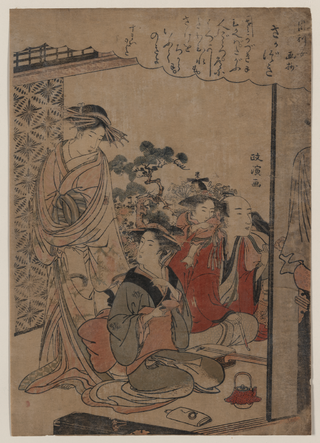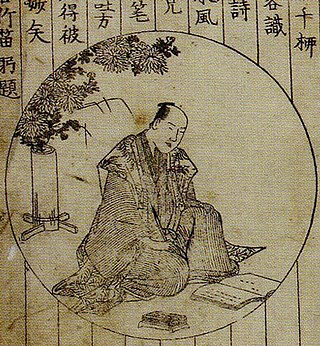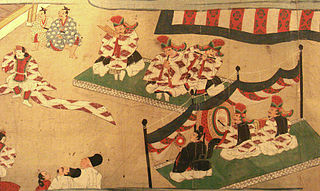William Paul Malm | |
|---|---|
| Born | March 6, 1928 La Grange, Illinois |
| Nationality | American |
| Alma mater | University of California Los Angeles (PhD in Music) |
| Known for | Study of music in Japan, teaching ethnomusicology |
| Awards | Fumio Koizumi Prize (1992), Charles Seeger lecturer (2001), Honorary Member of the Society for Ethnomusicology (2004) |
| Scientific career | |
| Fields | Ethnomusicology, East Asian studies, Japan |
| Institutions | University of Michigan |
| Thesis | Japanese Nagauta Music (1959) |
| Doctoral students | Judith Becker |
William Malm (born March 6, 1928) is an American musicologist known for his studies of Japanese traditional music. As a composer, teacher, and scholar of Japanese music, Malm shaped the study of ethnomusicology in the United States. Malm authored the first major scholarly study in English of the history and instruments of Japanese music, Japanese Music and Musical Instruments (1959). [1] He was a faculty member at the University of Michigan from 1960 to 1994. [2] Malm served as president of the Society for Ethnomusicology from 1977 to 1979 [3] and was named an Honorary Member of that organization in 2004. [4] Malm was awarded the Fumio Koizumi Prize in 1992 for his contributions to the study of Japanese music. [5] As the 2001 Charles Seeger Lecturer, Malm's address focused on the history and founding of ethnomusicology in the United States. [1]
Malm studied composition at Northwestern University, where he completed a Bachelor's in 1949 and a Master's in Music in 1950. He subsequently taught at the University of Illinois for a year. From 1951 to 1953, he was an instructor at the Naval School of Music. He completed the PhD in musicology at UCLA in 1959, where he also taught from 1958 to 1960. The bulk of his academic career was spent as a professor at the University of Michigan, where he taught from 1960 until 1994. At Michigan, he began an ethnomusicology program and worked with the Stearns Collection of Musical Instruments. [1] His book Music Cultures of the Pacific, the Near East, and Asia (1967) is an authoritative and widely used textbook.
Malm made significant contributions to the study of Asian ethnomusicology, particularly his fieldwork and research into music for dance and Japanese music. His primary research area was the music of the shamisen, including music of traditional Japanese Kabuki theatre and Bunraku puppet theatre. Pete Seeger writes of attending a recital of Joruri (Bunraku music) with Malm in Tokyo in 1963 where Malm translated three long scenes for him. Seeger also accompanied Malm to his Joruri lesson where Malm sang and recited long passages with the teacher playing the samisen. [6]
Malm's book on Nagauta (music of the Kabuki theatre), which grew out of his doctoral dissertation, is one of the first detailed studies of a single genre of Japanese music to be published in English. [1] In 1986 in New York when the To-on-Kai ensemble from Japan presented the first professional performances in America of Nagauta performed separately from Kabuki theatre, Malm published an article in The New York Times about the art form. [7]

Taiko are a broad range of Japanese percussion instruments. In Japanese, the term taiko refers to any kind of drum, but outside Japan, it is used specifically to refer to any of the various Japanese drums called wadaiko and to the form of ensemble taiko drumming more specifically called kumi-daiko. The process of constructing taiko varies between manufacturers, and the preparation of both the drum body and skin can take several years depending on the method.

Kabuki is a classical form of Japanese theatre, mixing dramatic performance with traditional dance. Kabuki theatre is known for its heavily stylised performances, its glamorous, highly decorated costumes, and for the elaborate kumadori make-up worn by some of its performers.

The shamisen, also known as sangen or samisen (all meaning "three strings"), is a three-stringed traditional Japanese musical instrument derived from the Chinese instrument sanxian. It is played with a plectrum called a bachi.

The hyōshigi is a simple Japanese musical instrument, consisting of two pieces of hardwood or bamboo often connected by a thin ornamental rope. The clappers are played together or on the floor to create a cracking sound. Sometimes they are struck slowly at first, then faster and faster.

Chikamatsu Monzaemon was a Japanese dramatist of jōruri, the form of puppet theater that later came to be known as bunraku, and the live-actor drama, kabuki. The Encyclopædia Britannica has written that he is "widely regarded as the greatest Japanese dramatist". His most famous plays deal with double-suicides of honor bound lovers. Of his puppet plays, around 70 are jidaimono (時代物) and 24 are sewamono (世話物). The domestic plays are today considered the core of his artistic achievement, particularly works such as The Courier for Hell (1711) and The Love Suicides at Amijima (1721). His histories are viewed less positively, though The Battles of Coxinga (1715) remains praised.

Bunraku is a form of traditional Japanese puppet theatre, founded in Osaka in the beginning of the 17th century, which is still performed in the modern day. Three kinds of performers take part in a bunraku performance: the Ningyōtsukai or Ningyōzukai (puppeteers), the tayū (chanters), and shamisen musicians. Occasionally other instruments such as taiko drums will be used. The combination of chanting and shamisen playing is called jōruri and the Japanese word for puppet is ningyō. It is used in many plays.

Nagauta is a kind of traditional Japanese music played on the shamisen and used in kabuki theater, primarily to accompany dance and to provide reflective interludes.
Kakegoe (掛け声) usually refers to shouts and calls used in performances of traditional Japanese music, Kabuki theatre, and in martial arts such as kendo.

Namiki Sōsuke, also known as Namiki Senryū, was a prominent Japanese playwright who wrote for both kabuki and bunraku. He produced around 47 bunraku plays, nearly 40 of them composed for jōruri, a particular form of musical narrative, and 10 kabuki plays. He is considered the second greatest Japanese playwright after Chikamatsu Monzaemon.

Traditional Japanese music is the folk or traditional music of Japan. Japan's Ministry of Education classifies hōgaku as a category separate from other traditional forms of music, such as gagaku or shōmyō, but most ethnomusicologists view hōgaku, in a broad sense, as the form from which the others were derived. Outside of ethnomusicology, however, hōgaku usually refers to Japanese music from around the 17th to the mid-19th century. Within this framework, there are three types of traditional music in Japan: theatrical, court music, and instrumental.
Ronald Cavaye is a British pianist, born in England and a resident of the United Kingdom. He is a classical pianist and writer.
Tōsha Rosen VI is a Japanese percussionist in the tradition of traditional Japanese dance and drama, the sixth iemoto (head) of the Tōsha school. He specializes in the taiko and tsuzumi, and performs as a member or leader of the hayashi in the kabuki theatre, as well as in a variety of other traditional contexts.
The Nagauta Symphony is a symphony in one movement composed in 1934 by Japanese composer Kosaku Yamada.

A hayashi (囃子) is a group of performers who provide musical accompaniment for Japanese Nō or kabuki theatre, yose performances of rakugo, or a festival.

Genroku culture is the term used to describe the culture of the early Edo period (1603–1867), in particular the Genroku era of 1688–1704. Genroku culture is known as a period of luxurious display when the arts were increasingly patronized by a growing and powerful merchant class. The Genroku period is associated with two pleasure zones: the brothel district and the theaters. These two areas were often located near each other on the margins of respectable society. These constituted the ukiyo celebrated in woodblock prints of prostitutes, actors, and pornography.
The Fumio Koizumi Prize is an international award for achievements in ethnomusicology, presented annually in Tokyo, Japan. The prize is awarded by the Fumio Koizumi (小泉文夫) Trust each April 4, the date of Fumio's birthday. The recipient receives an award certificate in addition to prize money. The winners must be present at the ceremony, deliver a prize lecture, and deliver another lecture at another Japanese university of his/her choice.
Jiuta (地歌/地唄/ぢうた) is a style of traditional Japanese music. In the Edo period (1603–1867), pieces in the jiuta style were played on the shamisen, and were mostly regional to Kamigata. The name jiuta means 'song' of 'a place' or 'a region', and suggests "not a song from Edo".
A variety of musical scales are used in traditional Japanese music. While a twelve-tone (dodecatonic) Chinese scale has influenced Japanese music since the Heian period, in practice Japanese traditional music is often based on pentatonic or heptatonic scales. In some instances, harmonic minor is used, while the melodic minor is virtually unused.
Meriyasu is a type of music used in kabuki theatre performances in Japan.

Shosagoto (所作事) or furigoto (振事), also known as dance or dance-drama, is a type of kabuki play based on dance. It is one of the three genres of kabuki, together with jidaimono and sewamono.